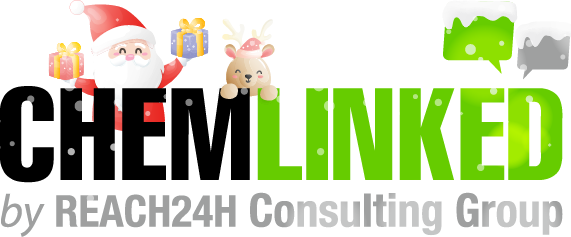China Issues First List of New Pollutants for Priority Management (2023)
China\’s first official list of new pollutants for priority management was released, which will come into force on March 1, 2023.
On December 30, 2022, the Chinese Ministry of Ecology and Environment made public the List of New Pollutants for Priority Management (2023), which will come into force on March 1, 2023. This is the first official list of new pollutants for priority management. Compared with the 2022 Draft, there is no significant change in the official version.
The List of New Pollutants for Priority Management (2023) contains 14 types of new pollutants, specifying their names, CAS numbers and major environmental risk control measures.
Main points that should be paid attention to:
- From January 1, 2024, many listed new pollutants will be comprehensively phased out as their granted exemption periods end.
- The use of dichloromethane and nonylphenol as cosmetic ingredients is prohibited.
*The English translation of the List of New Pollutants for Priority Management (2023) can be accessed here.
Proposed 14 Types of New Pollutants
- Perfluorooctane sulfonic acid and its salts and perfluorooctyl sulfonyl fluoride (PFOS)
- Perfluorooctanoic acid and its salts and related compounds (PFOA)
- Decabromodiphenylether
- Short-chain chlorinated paraffins
- Hexachlorobutadiene
- Pentachlorophenol and its salts and esters
- Dicofol
- Perfluorohexyl sulfonic acid and its salts and related compounds (PFHxS)
- Dechlorane and its cis and trans isomers
- Dichloromethane
- Trichloromethane
- Nonyl phenol
- Antibiotics
- Phase-out category (including hexabromocyclododecane, chlordane, mirex, hexachlorobenzene, dichloro-diphenyl-trichloroethane, α-hexachlorocyclohexane, β-hexachlorocyclohexane, lindane, technical endosulfan and its related isomers, polychlorinated biphenyls)
The List recategorizes 23 of 28 types of new pollutants listed in the 2021 Draft into the above 14 types. It deletes the following 5 types, i.e., dioxins, formaldehyde, ethanal, tetrachloroethylene and trichloroethylene. In addition, it provides more detailed information for chemical identification (i.e., CAS number).
Proposed Management Measures for New Pollutants
For Item 1 ~ 9 & Item 14 (persistent organic pollutants)
Item 1 ~ 9 are persistent organic pollutants (POPs) specified in the Stockholm Convention on POPs. For such POPs, management measures shall focus more on source control, e.g., prohibition or restriction. For POPs that need a certain period to be replaced by alternatives, specific exemptions are reserved, and requirements such as strengthening cleaner production are put forward.
Item 14 includes POPs that have been phased out in China. For these POPs, proposed management measures are to continue implementing the existing management measures for their source control and end-of-pipe treatment, such as the prohibition of the manufacture, use, and import of these POPs.
For Item 10 ~ 11 (toxic and harmful pollutants)
Items 10 and 11 are pollutants that have been listed in the Catalogue of Priority Chemicals, List of Toxic and Hazardous Air Pollutants, and List of Toxic and Hazardous Water Pollutants. For these two pollutants, proposed management measures include usage restrictions, content limits in products, emission limits, early-warning of environmental risks, etc.
For Item 12 (environmental endocrine disruptor)
Item 12 is nonyl phenol, an environmental endocrine disruptor of very high concern. For this pollutant, the proposed management measures are usage prohibitions to strengthen the source control, e.g., prohibition of its use as pesticide additives.
For Item 13 (antibiotics)
Item 13 is the antibiotics of high concern both at home and abroad. For this pollutant, proposed management measures focus on two points. One is to strictly implement the relevant regulations on the sales and use of antimicrobial drugs to reduce emissions caused by excessive and irregular use; the other is to strengthen the environmental management of waste of antibiotics and the implementation of relevant emission limits.
“One Type of New Pollutants, One Policy”
Speaking at the 14th Chemical Regulatory Annual Conference (CARC) held by REACH24h on September 26, 2022, Dr. Pan Xun, an official from the Solid Waste and Chemical Management Center of the MEE (SCC-MEE), introduced the “One Type of New Pollutants, One Policy” Management for the environmental management of new pollutants. Each type of listed new pollutants in the official list of new pollutants for priority management will have its own control policy, covering management measures for source control, emissions reduction during the processing, and end-of-pipe treatment. The control policies for listed new pollutants are formulated with reference to international conventions or even stricter than them.
Dr. Pan pointed out that local authorities could carry out the local version of control policies for the new pollutants in the official list based on the technical feasibility and economic & social impact. That is to say, the control policy for the same type of new pollutants may be different in different provinces or cities. However, local control policies should not be less stringent than those prescribed in the official list, said Dr. Pan.
Besides, Dr. Pan shared that Zhejiang would release the local action plan for new pollutants treatment by the end of 2022. He emphasized that enterprises involved in the emission of new pollutants in Zhejiang should arrange the corresponding emission reduction equipment in advance.
[Reprinted from ChemLinked]
Contact Us
If you have any questions regarding China New Chemical Substance Registration(MEE Order No. 12), please feel free to contact us.
Tel: +86-571-87007555
Email: customer@reach24h.com
News Source: ChemLinked

REACH24H Consulting Group launched ChemLinked in 2012 as a leading service provider of comprehensive regulatory information and compliance solutions, meeting the growing demand for clear and concise regulatory advice and market intelligence in Asia, especially China.
You can register for a membership to read the latest news limitlessly every day on ChemLinked.
